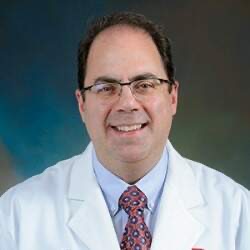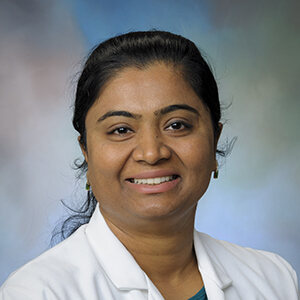The Division of Cardiovascular Medicine at UTMB is committed to combating cardiovascular disease, which remains the number-one killer in women ahead of all cancers combined – including breast and ovarian cancers.
This February, American Heart Month, members of the division are increasing awareness by contributing to education that helps save lives. Read insights from Division Chief Dr. Hani Jneid and three of our outstanding women clinicians below.

Dr. Hani Jneid, FAAC, FAHA, FSCAI | Nearly half of adult U.S. women live with some form of cardiovascular disease. Women should be vigilant about symptoms of heart attacks; when those occur in younger women especially below 50 years of age, they are usually associated with higher mortality and morbidity. Like men, symptoms of heart attacks in women include chest discomfort symptoms; but women are more likely to have other accompanying symptoms, like shortness of breath or nausea. Therefore, women should always be vigilant and take these symptoms seriously. |

Dr. Danielle El Haddad | Decades of data shows an unexpected high rate of maternal mortality in the United States in comparison to other developed countries with widening racial gaps. Cardiovascular disease remains the leading cause of maternal mortality and death among American women. Maternal crisis is due to multiple factors, most modifiable, including hypertension, diabetes, obesity, and access to care. 68.2 percent of pregnancy-related deaths from coronary conditions are preventable. There is a call for urgent action from cardiologists to fight this maternal morbidity and mortality and be part of a cardio obstetric program in order to plan a pregnancy in a high-risk patient, monitor pregnancy with multidisciplinary meeting and follow up post-partum, the most critical time with the highest rate of acute myocardial infarction and SCAD in the four weeks post-delivery. |

Dr. Elizabeth Davis | When a man suddenly drops to the ground, everyone's first concern is, “Did he have a heart attack?” But when a woman falls, we wonder, “Did she faint?” This perception contributes to the shocking statistic that 45 percent of men receive bystander CPR compared with only 39 percent of women and, subsequently, men having 23 percent higher odds of survival than women. We as a society have to change our thoughts regarding women's heart disease if we hope to save more lives. I and my colleagues at UTMB aim to break the stereotypes and assumptions surrounding women's cardiovascular care and improve heart health in all our mothers, grandmothers, daughters, and sisters. |

Sinju Jacob, RN, MSN, AGNP-C | Heart disease is one of the major causes of morbidity and mortality for women. Each of us should take steps every day towards a more heart-healthy lifestyle as this can prevent/delay heart disease. And the best part is that being more heart-healthy also lowers your risk for other diseases like cancer and diabetes. So, take control of your health by choosing a healthy lifestyle and regular cardiovascular screening. |
The above story was adapted from the February edition of the UTMB Faculty Group Practice Newsletter, which is a monthly resource for UTMB and community clinicians.